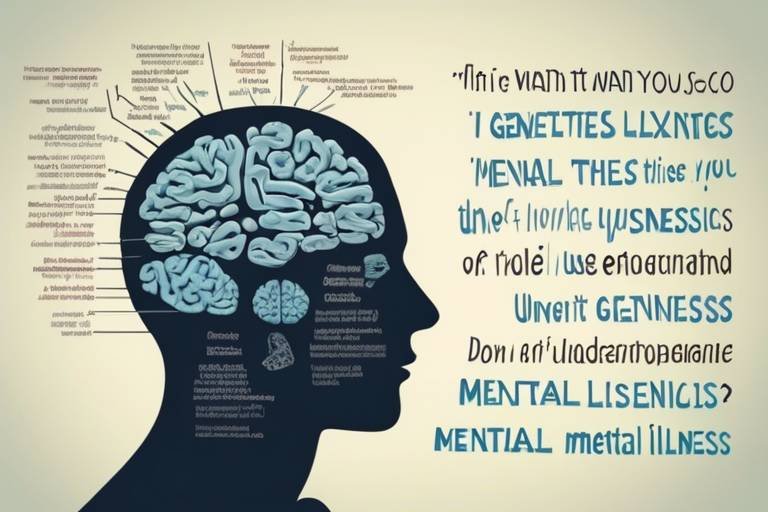Recent Findings on the Benefits of Plant-Based Diets
In recent years, there has been a significant shift in how we view our food choices, particularly with the rise of plant-based diets. With a plethora of studies emerging, it’s clear that these diets are not just a fleeting trend but a powerful lifestyle choice that can lead to a multitude of benefits. Imagine a world where your plate is not only colorful but also a source of vitality and health! This article explores the latest research on plant-based diets, highlighting their health benefits, environmental impact, and practical tips for incorporating more plant foods into your daily meals.
Numerous studies have shown that plant-based diets can reduce the risk of chronic diseases, improve heart health, and promote weight loss. For instance, a study published in the Journal of the American Heart Association found that individuals who embraced a plant-based diet had a 32% lower risk of developing heart disease compared to those who consumed a diet high in animal products. By focusing on fruits, vegetables, whole grains, and legumes, you are not just feeding your body but nourishing your soul. Imagine feeling lighter, having more energy, and enjoying a vibrant lifestyle—all simply by changing what’s on your plate!
Understanding these benefits can motivate individuals to make healthier dietary choices. It’s like having a magic wand that transforms your health with every bite of a colorful salad or a hearty bowl of quinoa. Besides heart health, research indicates that plant-based diets can also lower the risk of type 2 diabetes and certain cancers. The secret lies in the abundance of fiber, vitamins, and antioxidants found in plant foods, which work together to keep our bodies functioning optimally.
Adopting a plant-based diet significantly lowers one's carbon footprint, and this is where the magic really happens! By reducing meat consumption, we can contribute to environmental sustainability and combat climate change. According to a study by the World Resources Institute, if everyone in the U.S. skipped just one meal of chicken per week and instead opted for plant-based foods, it would be equivalent to taking over 7.6 million cars off the road! Isn’t that an eye-opener?
Did you know that plant-based diets require far less water compared to animal agriculture? This is not just a minor detail; it’s a crucial aspect of water conservation. For example, producing one pound of beef requires about 1,800 gallons of water, whereas a pound of lentils only needs around 600 gallons. This stark difference emphasizes the importance of mindful eating for water sustainability.
| Food Item | Water Footprint (Gallons per Pound) |
|---|---|
| Beef | 1,800 |
| Pork | 700 |
| Chicken | 500 |
| Lentils | 600 |
| Tofu | 300 |
This table illustrates the dramatic differences in water usage between various food items, highlighting just how impactful our dietary choices can be on this precious resource. By choosing plant-based options, we not only help ourselves but also contribute to a more sustainable future.
To further reduce water consumption through dietary choices, consider these practical strategies:
- Incorporate more legumes and grains into your meals.
- Choose seasonal and local produce to minimize resource usage.
- Plan meals around plant-based proteins instead of meat.
Switching to a plant-based diet can help preserve biodiversity by reducing habitat destruction linked to livestock farming. The relationship between our diet and ecological balance is profound. Every bite we take can either support or undermine the delicate web of life that sustains us. By reducing our meat consumption, we can help protect endangered species and maintain the ecosystems that are vital for our planet’s health.
Transitioning to a plant-based diet can be challenging, but it’s also an exciting journey filled with discovery and deliciousness! Here are some practical tips to help you make the switch smoothly and sustainably:
Effective meal planning is essential for maintaining a balanced plant-based diet. Start by dedicating a day each week to plan your meals. This not only saves time but also ensures that you have a variety of nutrients. Think of it as crafting a colorful masterpiece on your plate. Your body will thank you for the effort!
Navigating the world of plant-based alternatives can be overwhelming, but fear not! Popular substitutes for common animal products include:
- Almond milk instead of cow's milk
- Chickpeas for tuna in salads
- Cauliflower as a pizza crust or rice
By incorporating these alternatives, you can enjoy all your favorite dishes while embracing a plant-based lifestyle.
1. What are the main health benefits of a plant-based diet?
A plant-based diet can lower the risk of chronic diseases, improve heart health, and aid in weight loss.
2. How does a plant-based diet impact the environment?
It reduces carbon footprints, conserves water, and helps preserve biodiversity.
3. What are some easy plant-based meals to start with?
Try lentil soup, vegetable stir-fry, or a hearty salad with quinoa and chickpeas.
4. Can I get enough protein on a plant-based diet?
Absolutely! Foods like beans, lentils, tofu, and quinoa are excellent sources of protein.
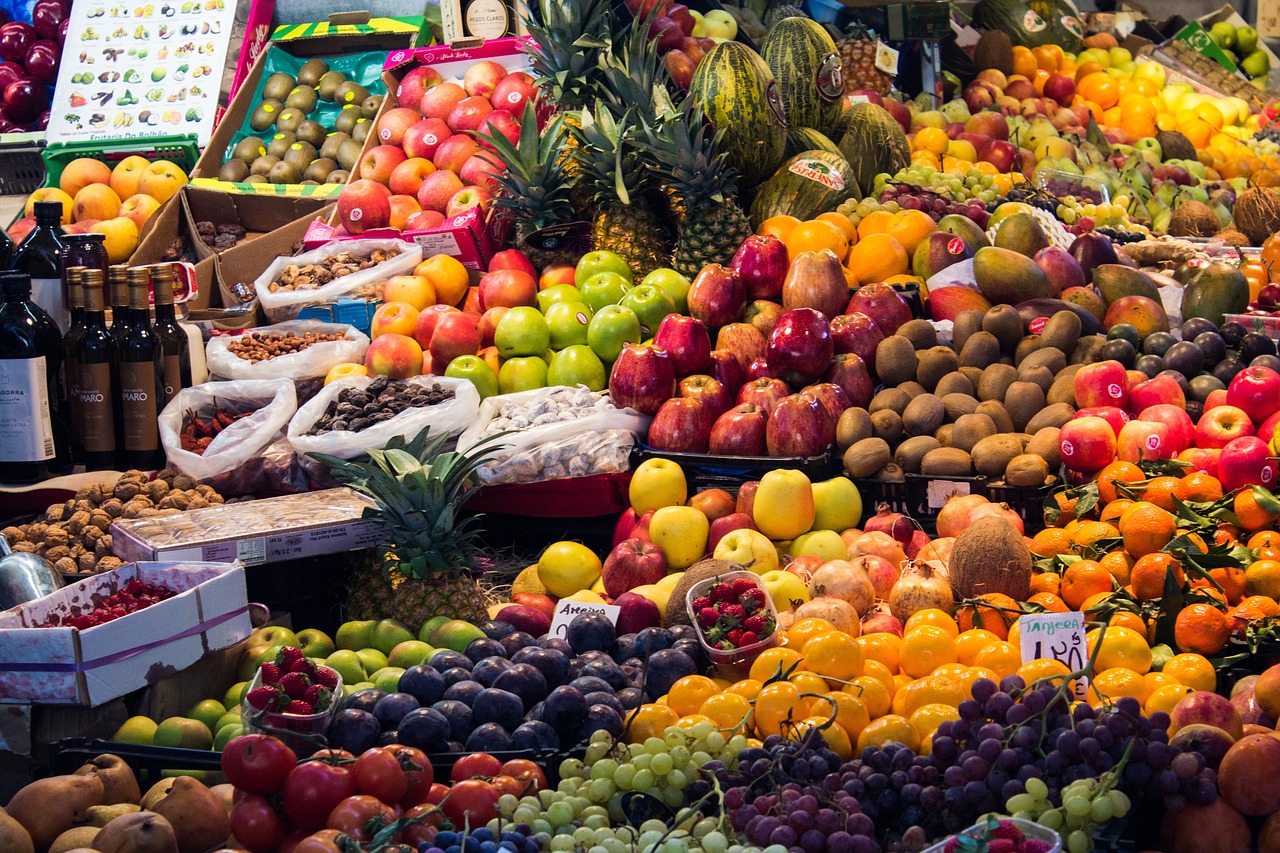
Health Benefits of Plant-Based Diets
When it comes to eating, the choices we make can have a profound impact on our health. A plant-based diet is more than just a trend; it's a lifestyle choice that can lead to significant health benefits. Numerous studies have shown that embracing a diet rich in fruits, vegetables, whole grains, and legumes can dramatically reduce the risk of chronic diseases such as heart disease, diabetes, and certain cancers. Imagine feeling more energetic, vibrant, and alive simply by changing what’s on your plate!
One of the most compelling reasons to consider a plant-based diet is its ability to improve heart health. Research indicates that individuals who consume a diet high in plant foods have lower cholesterol levels, reduced blood pressure, and a decreased risk of heart attacks. This is largely due to the high fiber content found in plants, which helps to keep your arteries clear and your heart pumping efficiently. In fact, a study published in the Journal of the American Heart Association found that those who followed a plant-based diet had a 32% lower risk of developing heart disease compared to their meat-eating counterparts.
But that's not all! Plant-based diets are also fantastic for weight management. If you've ever struggled with weight loss, you might be surprised to learn that many plant foods are lower in calories yet packed with essential nutrients. This means you can eat larger portions while consuming fewer calories. Foods like beans, lentils, and vegetables are not only filling but also help to regulate your metabolism. It's like having your cake and eating it too—without the guilt!
Moreover, the benefits extend beyond just physical health. A plant-based diet can also enhance your mental well-being. Some studies suggest that diets rich in fruits and vegetables are linked to lower levels of depression and anxiety. The nutrients found in these foods, such as antioxidants and omega-3 fatty acids, play a crucial role in brain health. Think of it as feeding your brain the nutrients it craves to function at its best!
To further illustrate the health benefits, let’s take a look at a comparison of some common health indicators between plant-based eaters and those who consume a traditional Western diet:
| Health Indicator | Plant-Based Diet | Western Diet |
|---|---|---|
| Cholesterol Levels | Lower | Higher |
| Blood Pressure | Lower | Higher |
| Body Mass Index (BMI) | Lower | Higher |
| Risk of Heart Disease | Reduced | Increased |
In summary, adopting a plant-based diet can lead to a multitude of health benefits that not only enhance physical health but also contribute to improved mental well-being. So, if you're looking to make a positive change in your life, why not explore the vibrant world of plant-based eating? It’s not just about what you eat; it’s about how you feel!
- What are the main components of a plant-based diet? A plant-based diet primarily consists of fruits, vegetables, whole grains, legumes, nuts, and seeds, with little to no animal products.
- Can I get enough protein on a plant-based diet? Absolutely! Many plant foods, such as beans, lentils, tofu, and quinoa, are excellent sources of protein.
- Will I miss out on nutrients? If planned properly, a plant-based diet can provide all the essential nutrients your body needs. It's important to include a variety of foods to cover all nutrient bases.

Environmental Impact of Plant-Based Eating
The environmental impact of our dietary choices is becoming increasingly clear, and a plant-based diet stands out as a beacon of hope in the fight against climate change. By reducing our reliance on animal products, we can significantly lower our carbon footprint and contribute to a healthier planet. Did you know that livestock farming is responsible for more greenhouse gas emissions than all the world's cars, planes, and trains combined? It's staggering, isn't it? By simply shifting our focus to plant foods, we can make a profound difference.
One of the most compelling reasons to embrace a plant-based diet is its potential to combat environmental degradation. The production of meat and dairy requires vast amounts of resources, including land, water, and energy. In contrast, plant-based foods typically require far fewer inputs. For instance, producing one pound of beef requires approximately 1,800 gallons of water, whereas a pound of lentils needs only about 300 gallons. This stark difference highlights the importance of making conscious food choices that support sustainability.
Water scarcity is an urgent issue facing many regions around the globe, and adopting a plant-based diet can play a crucial role in conserving this precious resource. The agricultural sector is the largest consumer of freshwater, and a significant portion of that is used for livestock production. By choosing plant-based options, we can drastically reduce our water usage. For example, the table below illustrates the water footprint of various foods:
| Food Item | Water Footprint (gallons per pound) |
|---|---|
| Beef | 1,800 |
| Pork | 700 |
| Chicken | 500 |
| Lentils | 300 |
| Tofu | 300 |
As you can see, the difference in water usage is staggering. By opting for plant-based proteins like lentils and tofu, we are not only making healthier choices for ourselves but also for the environment. It's a win-win situation!
So, how can we effectively reduce our water consumption through our dietary choices? Here are a few practical strategies:
- Incorporate more legumes and grains: These foods are not only nutritious but also have a lower water footprint.
- Choose seasonal and local produce: This reduces the water and energy costs associated with transporting food over long distances.
- Minimize food waste: Plan your meals and use leftovers creatively to ensure that you're not wasting food that requires water to produce.
By implementing these strategies, we can contribute to a more sustainable food system that prioritizes water conservation and environmental health.
Another critical aspect of the environmental impact of plant-based eating is its positive effect on biodiversity. Livestock farming is a leading cause of habitat destruction, as forests are cleared to create grazing land and grow animal feed. This destruction not only threatens countless species but also disrupts ecosystems and the delicate balance of nature. By choosing a plant-based diet, we are actively participating in the preservation of biodiversity and helping to protect the habitats of many species.
In conclusion, the environmental benefits of adopting a plant-based diet extend far beyond personal health. By reducing our carbon footprint, conserving water, and protecting biodiversity, we can make a significant impact on the health of our planet. The choices we make at the grocery store can lead to a ripple effect, encouraging sustainable practices and a healthier environment for future generations.
Q: What are the main environmental benefits of a plant-based diet?
A: A plant-based diet can significantly reduce greenhouse gas emissions, lower water usage, and help preserve biodiversity by minimizing habitat destruction associated with livestock farming.
Q: How can I transition to a plant-based diet?
A: Start by incorporating more plant-based meals into your week, explore new recipes, and gradually replace animal products with plant-based alternatives.
Q: Will I get enough protein on a plant-based diet?
A: Absolutely! There are plenty of plant-based protein sources such as legumes, nuts, seeds, and whole grains that can provide all the protein you need.
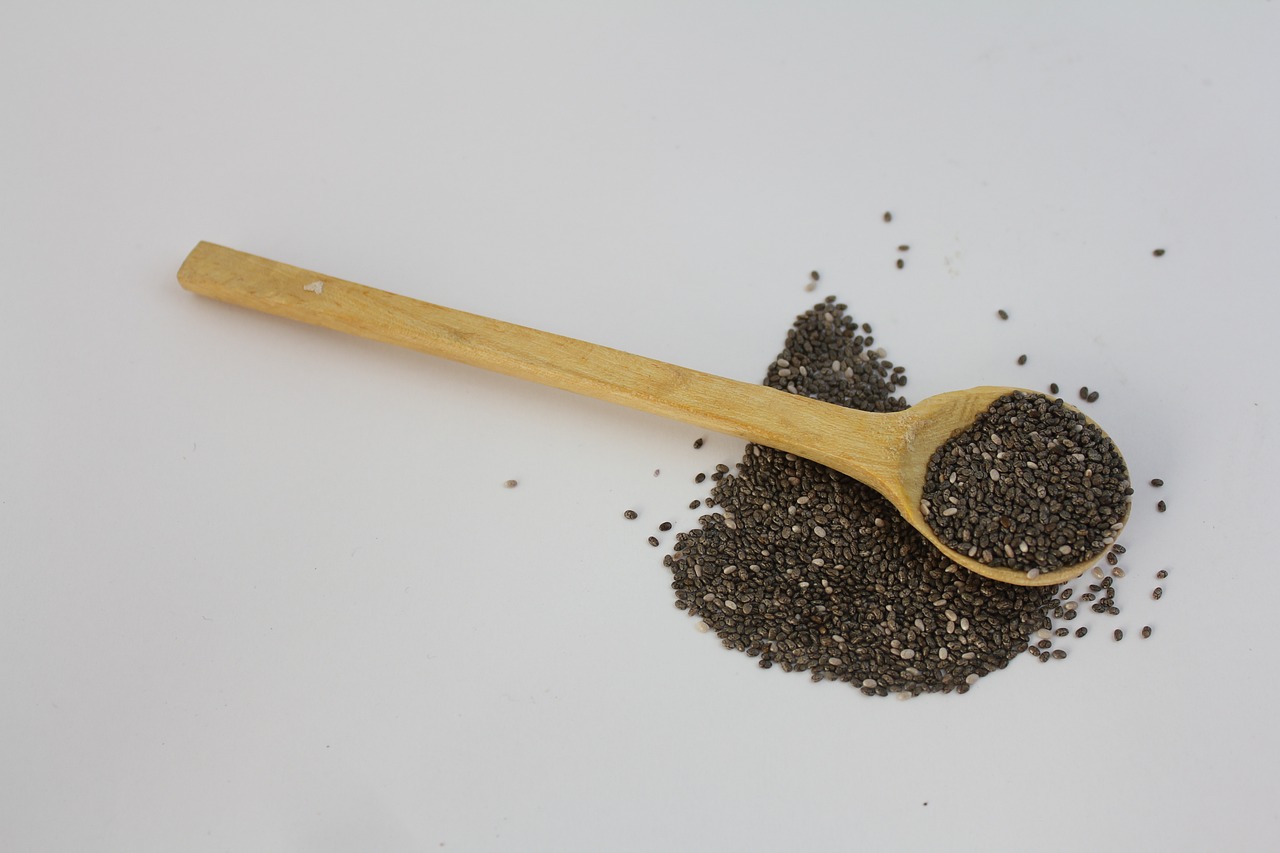
Water Usage and Plant-Based Diets
When we talk about food, we often forget about the water that goes into producing it. Did you know that the amount of water required to grow food varies significantly between plant-based and animal-based diets? It's astonishing! For instance, producing just one pound of beef can consume over 1,800 gallons of water, while a pound of vegetables might only require about 39 gallons. This stark difference highlights the incredible water conservation potential of adopting a plant-based diet.
Water is a precious resource, and as we face increasing challenges like droughts and water scarcity, understanding how our food choices impact this resource is crucial. By shifting towards a plant-based diet, individuals can play a vital role in conserving water. This not only benefits the environment but also promotes a more sustainable future for generations to come.
To illustrate the impact of our dietary choices on water usage, let’s take a look at a comparative table that outlines the water footprints of various foods:
| Food Item | Water Footprint (gallons per pound) |
|---|---|
| Beef | 1,800 |
| Pork | 576 |
| Chicken | 468 |
| Cheese | 381 |
| Eggs | 469 |
| Vegetables | 39 |
| Fruits | 56 |
As you can see from the table, the water footprint of plant-based foods is dramatically lower than that of animal products. This fact should make us pause and reflect on our food choices. Are we really aware of the impact our diets have on the planet? By choosing more fruits, vegetables, grains, and legumes, we can significantly reduce our water consumption.
Moreover, the benefits of a plant-based diet extend beyond just water conservation. By consuming less meat and more plant foods, we can help alleviate the stress on water resources, which is crucial for maintaining ecological balance. This shift not only supports a healthier planet but also contributes to our own well-being.
In conclusion, the relationship between water usage and dietary choices is a compelling reason to consider adopting a plant-based diet. By making conscious decisions about what we eat, we can contribute to a more sustainable future, ensuring that water remains available for all living beings. So, the next time you sit down for a meal, think about the water that went into your food and how you can make a difference.
- How can I start reducing my water footprint through my diet?
Begin by incorporating more plant-based meals into your weekly diet. Try "Meatless Mondays" or substitute meat with legumes and grains. - Are plant-based diets more expensive?
Not necessarily! While some specialty plant-based products can be pricey, whole foods like beans, rice, and seasonal vegetables are often more affordable. - Can I get enough protein from a plant-based diet?
Absolutely! There are plenty of plant-based protein sources like lentils, chickpeas, quinoa, and nuts that can meet your protein needs.
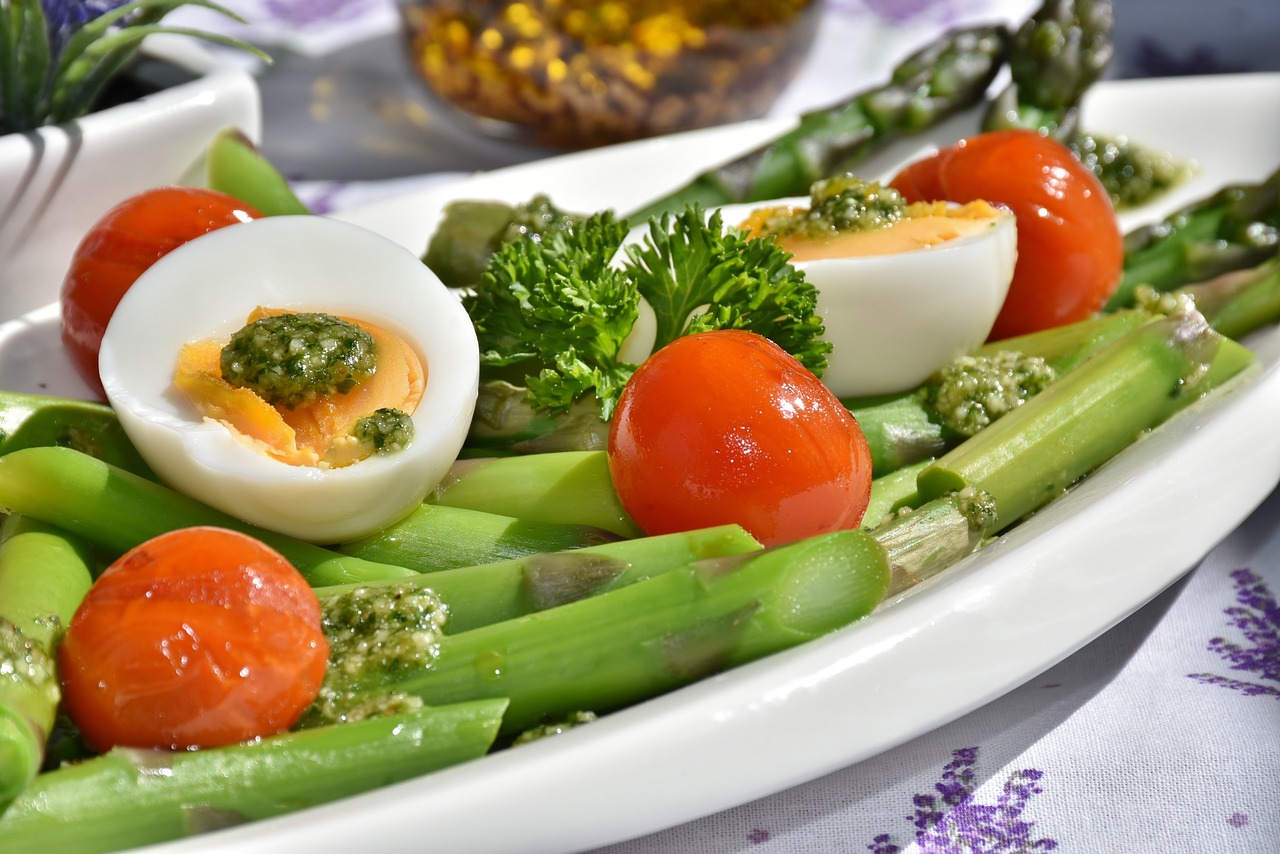
Comparative Water Footprints
When we think about our food choices, we often consider taste and nutrition, but have you ever stopped to ponder the water footprint of what’s on your plate? It’s a crucial aspect that many overlook, yet it plays a significant role in understanding the environmental impact of our diets. The term "water footprint" refers to the total volume of freshwater used to produce the goods we consume. This includes not only the water consumed directly but also the water needed for growing feed, watering animals, and processing food.
To put things into perspective, let’s compare the water footprints of various foods. Did you know that producing just one pound of beef requires approximately 1,800 gallons of water? In contrast, a pound of lentils only needs about 600 gallons. This staggering difference highlights how shifting our dietary preferences can lead to significant water conservation. Here’s a quick comparison:
| Food Item | Water Footprint (gallons per pound) |
|---|---|
| Beef | 1,800 |
| Pork | 700 |
| Chicken | 500 |
| Cheese | 900 |
| Lentils | 600 |
| Tofu | 400 |
This table clearly illustrates the dramatic disparity in water usage between animal and plant-based foods. The high water demand for livestock farming not only strains our water resources but also contributes to water scarcity in many regions. By choosing plant-based options, we can reduce our water consumption significantly. For instance, if more people opted for lentils or tofu instead of beef or cheese, we could alleviate some of the pressure on our water systems.
Moreover, it’s essential to recognize that the water footprint is not merely a number; it reflects the broader implications of our food choices. When we consume less water-intensive foods, we are not just saving water; we are also contributing to a more sustainable food system. This shift can lead to improved biodiversity, as less water-intensive agriculture is often less harmful to natural habitats.
In conclusion, understanding the comparative water footprints of our food can empower us to make informed choices. As we strive for a sustainable future, every small change in our diet can lead to a ripple effect, promoting conservation and ecological balance. So, the next time you’re at the grocery store or planning your meals, consider opting for those plant-based alternatives that are not only healthy for you but also for our precious planet.
- What is a water footprint?
A water footprint measures the total volume of freshwater used to produce goods, including direct and indirect water consumption. - Why is the water footprint of meat so high?
Meat production requires significant amounts of water for animal hydration, feed crops, and processing. - How can I reduce my water footprint through diet?
By incorporating more plant-based foods into your diet, such as legumes, grains, and vegetables, you can significantly lower your water usage. - Are there other benefits to a plant-based diet?
Yes, plant-based diets can reduce the risk of chronic diseases, improve heart health, and contribute to environmental sustainability.
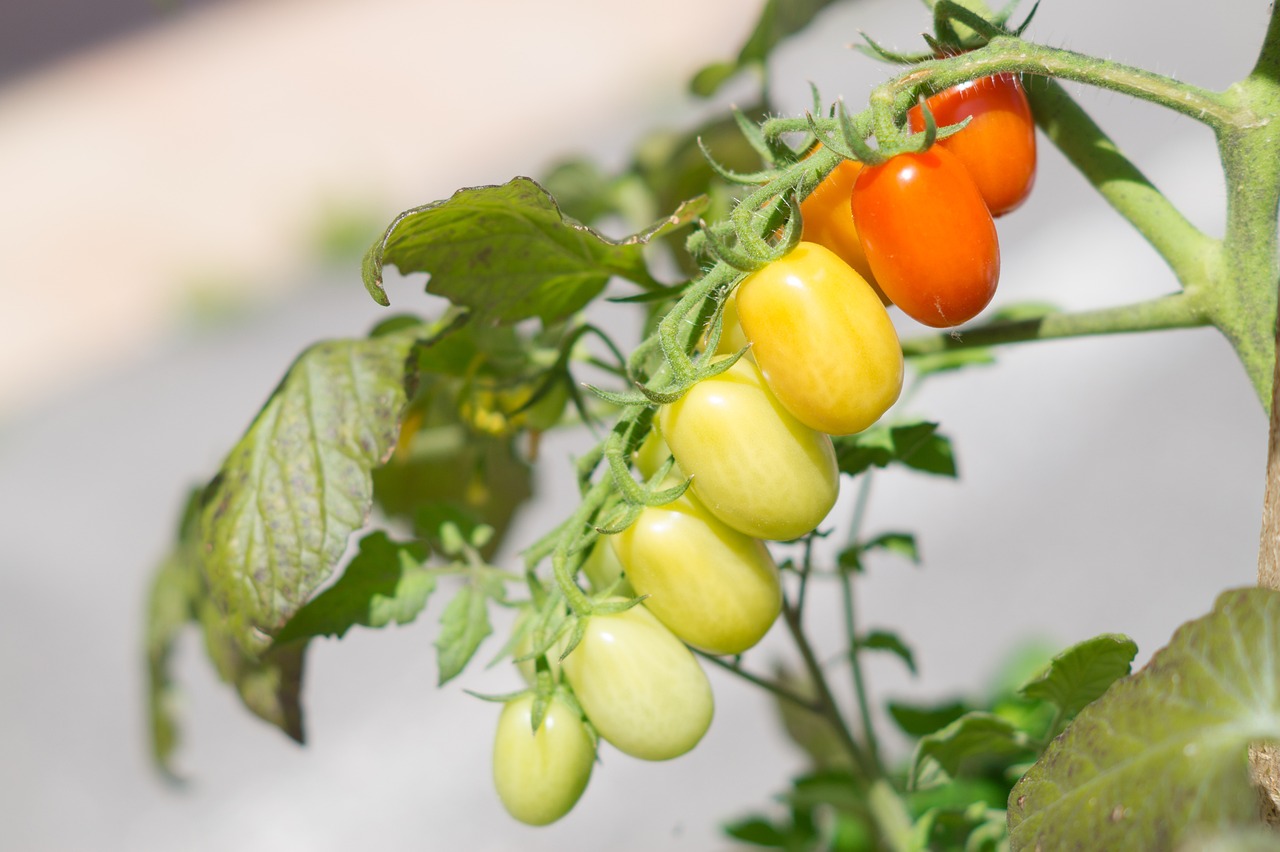
Strategies for Reducing Water Consumption
Reducing water consumption is not just about turning off the tap while brushing your teeth; it’s a lifestyle choice that can significantly impact our planet. When it comes to adopting a plant-based diet, there are several strategies you can implement to minimize your water usage while still enjoying delicious meals. First, consider the types of foods you are consuming. Plant-based foods generally require less water to produce compared to animal products. For instance, a pound of beef can take up to 1,800 gallons of water to produce, while a pound of lentils requires only about 600 gallons. By prioritizing water-efficient crops like beans, grains, and vegetables, you can make a substantial difference.
Another effective strategy is seasonal eating. By choosing fruits and vegetables that are in season, you not only support local farmers but also reduce the water footprint associated with transporting out-of-season produce from distant locations. Seasonal foods are often fresher and tastier too, making your meals more enjoyable. For example, during the summer months, you can indulge in juicy tomatoes and cucumbers, while fall brings hearty squashes and apples. The key is to plan your meals around what’s available locally and seasonally.
Additionally, mindful meal planning can help you reduce waste and conserve water. When you plan your meals for the week, you can ensure that you are using ingredients efficiently without letting any food go to waste. This not only conserves the water that went into producing the food but also saves you money. A simple way to start is by creating a weekly menu and shopping list based on what you already have at home, which reduces unnecessary purchases and potential spoilage.
Lastly, consider incorporating water-saving cooking techniques into your routine. Techniques such as steaming vegetables rather than boiling them can help preserve nutrients and minimize water usage. When boiling, the water used often goes down the drain, but with steaming, you can use the same water for multiple batches or even repurpose it in soups or sauces. It’s a small change that can lead to significant savings over time.
In conclusion, every little effort counts when it comes to conserving water. By making informed choices about what you eat, when you eat it, and how you prepare it, you can contribute to a more sustainable future. The journey towards a plant-based diet is not just about personal health; it’s about making a positive impact on our environment and ensuring a better world for future generations.
- How does a plant-based diet reduce water consumption? A plant-based diet typically requires less water to produce compared to animal products, helping to conserve valuable water resources.
- What are some water-efficient plant foods? Foods like lentils, beans, grains, and seasonal vegetables are generally more water-efficient choices.
- How can I start meal planning for a plant-based diet? Begin by creating a weekly menu based on seasonal produce and what you already have at home to minimize waste and conserve water.
- Are there cooking techniques that help save water? Yes, techniques like steaming instead of boiling can significantly reduce water usage in cooking.

Impact on Biodiversity
Switching to a plant-based diet can have a profound impact on biodiversity, acting as a powerful tool in the fight against habitat destruction and species extinction. When we think about our food sources, it’s easy to overlook the ecological consequences of our choices. However, the reality is that livestock farming is a leading cause of deforestation, water depletion, and land degradation. By reducing our reliance on animal products, we can help preserve the delicate balance of ecosystems that support countless species.
Every time we choose to eat plants instead of meat, we contribute to a ripple effect that can enhance biodiversity. For instance, consider the expansive areas of land required for raising livestock. These lands often come at the cost of rich forests and wetlands, which are home to diverse flora and fauna. By shifting towards a plant-based diet, we can reduce the demand for such land, allowing these natural habitats to thrive once again. It's like giving Mother Nature a much-needed break!
The relationship between diet and biodiversity is not just about the quantity of land used; it also involves the types of crops we choose to consume. Monoculture farming, which is the practice of growing a single crop over a wide area, can lead to soil depletion and a lack of genetic diversity. In contrast, a diverse array of plant foods can promote healthier ecosystems. By incorporating a variety of fruits, vegetables, legumes, and grains into our diets, we not only improve our health but also support agricultural practices that are less harmful to the environment.
Moreover, the biodiversity of our diets can directly influence the health of our planet. Diverse diets can lead to more resilient agricultural systems, which are better equipped to withstand pests, diseases, and climate change. This resilience is crucial for maintaining food security and protecting the ecosystems that provide us with the resources we need to survive. In essence, choosing a variety of plant-based foods is akin to planting seeds of sustainability that can flourish into a healthier planet.
To illustrate the impact of dietary choices on biodiversity, consider the following table that compares the land use and biodiversity impacts of animal versus plant-based foods:
| Food Type | Land Use (acres per year) | Biodiversity Impact |
|---|---|---|
| Beef | 1.8 | High - contributes to deforestation and habitat loss |
| Pork | 0.8 | Moderate - impacts local ecosystems |
| Chicken | 0.4 | Moderate - less impact than red meat |
| Vegetables | 0.2 | Low - promotes ecological balance |
| Legumes | 0.1 | Very Low - enhances soil health and biodiversity |
As you can see, the difference in land use and biodiversity impact is staggering. By choosing plant-based foods, not only do we reduce our ecological footprint, but we also contribute to a healthier planet that can sustain diverse life forms. It’s a win-win situation!
In conclusion, the impact of our dietary choices on biodiversity cannot be overstated. By embracing a plant-based diet, we are taking a stand for the environment and supporting the intricate web of life that sustains us all. So, why not give it a shot? You might just find that your plate can be a canvas for change!
- How does a plant-based diet help biodiversity?
A plant-based diet reduces the demand for land used for livestock farming, which helps preserve natural habitats and supports diverse ecosystems. - What are the environmental benefits of eating less meat?
Eating less meat lowers greenhouse gas emissions, conserves water, and reduces land degradation associated with animal agriculture. - Can I get enough protein on a plant-based diet?
Absolutely! There are plenty of plant-based sources of protein, including beans, lentils, quinoa, and nuts. - What are some easy ways to transition to a plant-based diet?
Start by incorporating more fruits, vegetables, and whole grains into your meals, and try substituting plant-based alternatives for your favorite animal products.

Practical Tips for Transitioning
Transitioning to a plant-based diet can feel like a daunting task, akin to navigating a maze without a map. But fear not! With the right strategies and mindset, you can make this journey not only manageable but also enjoyable. First and foremost, start by setting realistic goals. Instead of diving headfirst into a fully plant-based lifestyle, consider adopting a gradual approach. For instance, you might begin by designating one day a week as "Meatless Monday." This small step can lead to significant changes over time.
Another essential aspect is meal planning. Effective meal planning is like having a roadmap; it ensures you stay on course and helps you avoid the temptation of reverting to old eating habits. Spend some time each week to plan your meals, focusing on incorporating a variety of fruits, vegetables, whole grains, and legumes. This not only enhances your nutritional intake but also keeps your meals exciting. Consider using a simple table to track your meals for the week:
| Day | Breakfast | Lunch | Dinner |
|---|---|---|---|
| Monday | Oatmeal with berries | Chickpea salad | Stir-fried tofu with veggies |
| Tuesday | Smoothie with spinach and banana | Lentil soup | Quinoa and black bean bowl |
| Wednesday | Avocado toast | Veggie wrap | Stuffed bell peppers |
Finding plant-based alternatives to your favorite animal products is another key step in your transition. The market is bursting with options, from almond milk to lentil burgers, making it easier than ever to swap out traditional items. When shopping, take a moment to read labels and experiment with different brands and products until you find what you love. You might be surprised at how satisfying these alternatives can be!
Moreover, don’t underestimate the power of community. Joining a local or online plant-based group can provide you with support, inspiration, and motivation. Sharing your experiences and learning from others can make the transition smoother. You can exchange recipes, tips, and even meal prep together. It’s like having a cheerleading squad for your dietary changes!
Lastly, remember that patience is key. Changing your eating habits is a journey, not a race. Celebrate your successes, no matter how small, and don’t be too hard on yourself if you slip up. Every step you take towards a more plant-based diet is a step towards better health and a more sustainable planet.
- What if I miss my favorite meat dishes? – Try to recreate them using plant-based ingredients. There are countless recipes that mimic the flavors and textures of meat!
- How do I ensure I get enough protein? – Incorporate a variety of legumes, nuts, seeds, and whole grains into your meals to meet your protein needs.
- Is it expensive to eat plant-based? – It can be budget-friendly! Focus on whole foods like beans, rice, and seasonal vegetables, which are often cheaper than processed foods.

Meal Planning and Preparation
Transitioning to a plant-based diet can feel like navigating a maze, but with effective meal planning and preparation, it can be a rewarding journey. The key is to approach your meals with a sense of adventure, much like a chef experimenting with new ingredients. Start by envisioning your week ahead—think of it as crafting a delicious story where each meal plays a pivotal role. By planning your meals, you not only ensure nutritional adequacy but also save time and reduce food waste.
One of the first steps in meal planning is to create a weekly menu. This doesn’t have to be overly complicated. A simple outline can include breakfast, lunch, dinner, and snacks. Consider incorporating a variety of colorful fruits and vegetables, whole grains, legumes, nuts, and seeds. Aim for a balance of macronutrients to keep your energy levels steady throughout the day. For instance, you might plan a hearty quinoa salad for lunch, packed with chickpeas, bell peppers, and a zesty lemon dressing, and a cozy vegetable stir-fry for dinner that features tofu and a rainbow of veggies.
To make your meal prep smoother, consider dedicating a few hours each week to cook in bulk. By preparing large batches of staple items like grains, beans, and roasted vegetables, you can easily mix and match them throughout the week. For example, if you roast a big tray of sweet potatoes on Sunday, you can enjoy them in tacos, salads, or as a side dish at dinner. This not only saves time but also allows you to be creative with your meals. The more you experiment, the more you’ll discover what flavors and textures you love.
Another tip is to keep a well-stocked pantry. Having a variety of plant-based staples on hand can make meal preparation a breeze. Here’s a quick list of essentials to consider:
- Whole grains (quinoa, brown rice, oats)
- Legumes (canned or dried beans, lentils)
- Nuts and seeds (almonds, chia seeds, flaxseeds)
- Plant-based oils (olive oil, coconut oil)
- Spices and herbs (cumin, basil, turmeric)
Lastly, don’t forget to embrace the joy of cooking. Try new recipes and invite friends over for a plant-based potluck. Sharing meals can make the experience even more enjoyable and can help keep you motivated on your journey. Remember, it’s about progress, not perfection. If you accidentally slip back into old habits, don’t beat yourself up. Just pick up where you left off and keep exploring the vibrant world of plant-based eating.
Q: How do I ensure I’m getting enough protein on a plant-based diet?
A: Incorporate a variety of protein sources such as lentils, chickpeas, tofu, tempeh, quinoa, and nuts. Combining different sources throughout the day can help meet your protein needs.
Q: Can I still enjoy my favorite recipes on a plant-based diet?
A: Absolutely! Many recipes can be easily adapted by substituting animal products with plant-based alternatives. For example, use almond milk instead of cow's milk or try jackfruit as a meat substitute in tacos.
Q: What are some quick and easy plant-based meal ideas?
A: Some quick ideas include overnight oats for breakfast, a chickpea salad sandwich for lunch, and a veggie stir-fry with brown rice for dinner. Snacks can include fruits, nuts, or hummus with veggies.
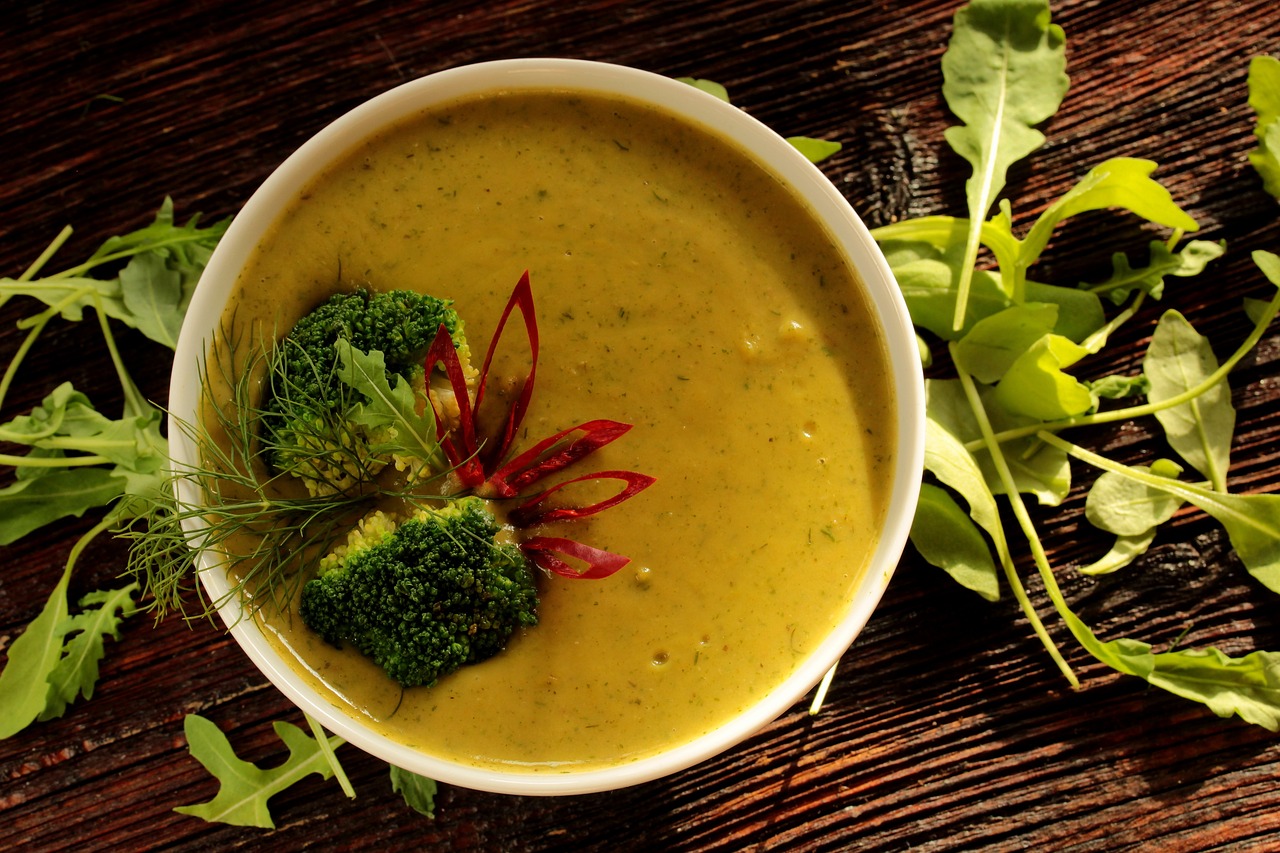
Finding Plant-Based Alternatives
Transitioning to a plant-based diet can feel like stepping into uncharted territory, especially when it comes to finding suitable alternatives for your favorite animal products. However, the good news is that the market is bursting with innovative options that make this switch not only possible but also enjoyable! Imagine swapping out your traditional dairy milk for creamy almond or oat milk, or enjoying a delicious veggie burger that rivals its beefy counterpart. The key is to keep an open mind and explore the plethora of choices available.
When searching for plant-based alternatives, it’s essential to understand the variety of options that exist. For instance, if you’re missing cheese, there are numerous vegan cheeses made from nuts, soy, or tapioca. These products not only mimic the texture but can also provide a delightful flavor that satisfies your cravings. Similarly, if you’re a fan of eggs, consider trying chickpea flour or tofu scramble. Both are excellent sources of protein and can be seasoned to perfection, making them a fantastic breakfast option.
Another area to explore is plant-based meats. Brands have made significant strides in creating alternatives that closely resemble the taste and texture of meat. Products like Beyond Meat and Impossible Foods have gained popularity for their ability to deliver a meaty experience without the environmental and ethical concerns associated with animal farming. These alternatives are not only convenient but also versatile, allowing you to create everything from savory tacos to hearty stews.
To make your transition smoother, consider visiting local health food stores or farmers' markets, where you can find a variety of plant-based products. Many supermarkets now have dedicated sections for vegan and vegetarian options, making it easier than ever to stock up on your favorites. Don't hesitate to experiment with different brands and types of products; your taste buds will thank you!
Here’s a quick reference table to help you identify some common plant-based alternatives:
| Animal Product | Plant-Based Alternative |
|---|---|
| Milk | Almond Milk, Soy Milk, Oat Milk |
| Cheese | Vegan Cheese, Nutritional Yeast |
| Eggs | Chickpea Flour, Tofu |
| Meat | Beyond Burger, Tofurky, Lentils |
As you venture into the world of plant-based eating, remember that it's about finding what works for you. Don’t be afraid to mix and match these alternatives in your meals. For instance, you could create a hearty stir-fry using tofu, an array of colorful vegetables, and a drizzle of soy sauce for flavor. The possibilities are endless, and with a little creativity, you can enjoy meals that are not only nutritious but also bursting with flavor!
- What are some easy plant-based meals for beginners? Start with simple recipes like veggie stir-fries, salads, or grain bowls that allow you to mix different vegetables, grains, and legumes.
- Are plant-based alternatives more expensive? While some plant-based products can be pricier, many staples like beans, lentils, and grains are affordable and versatile.
- Can I get enough protein on a plant-based diet? Absolutely! Foods like lentils, chickpeas, quinoa, and tofu are excellent sources of protein.
Frequently Asked Questions
- What are the primary health benefits of adopting a plant-based diet?
Adopting a plant-based diet can lead to numerous health benefits, including a reduced risk of chronic diseases such as heart disease, diabetes, and certain cancers. Many studies indicate that consuming more fruits, vegetables, whole grains, and legumes can improve heart health, aid in weight management, and enhance overall well-being. Essentially, it’s like giving your body a nutrient-rich boost, making you feel lighter and more energetic!
- How does a plant-based diet impact the environment?
Switching to a plant-based diet significantly lowers your carbon footprint. Animal agriculture is a major contributor to greenhouse gas emissions, deforestation, and water pollution. By reducing meat consumption, you’re not just making a healthier choice for yourself but also contributing to a more sustainable planet. Think of it as a way to do your part in saving the Earth, one meal at a time!
- What is the water usage difference between plant-based and animal-based foods?
Plant-based diets require far less water compared to animal agriculture. For instance, producing a pound of beef requires approximately 1,800 gallons of water, while a pound of vegetables only needs about 39 gallons. This stark contrast highlights the importance of mindful eating, especially in areas facing water scarcity. It’s like choosing to quench your thirst with a refreshing drink instead of a desert!
- Can a plant-based diet help in preserving biodiversity?
Absolutely! Switching to a plant-based diet can significantly help preserve biodiversity by reducing habitat destruction linked to livestock farming. When fewer resources are used for animal agriculture, it allows ecosystems to thrive and wildlife to flourish. It’s a win-win situation for both your health and the planet!
- What are some practical tips for transitioning to a plant-based diet?
Transitioning to a plant-based diet can be smooth with a few practical tips. Start by gradually incorporating more plant foods into your meals, like adding a veggie stir-fry to your dinner or swapping out dairy for plant-based alternatives. Meal planning is crucial; it ensures you have a variety of nutritious options available. Remember, it’s all about progress, not perfection!
- What are some common plant-based alternatives for animal products?
Navigating plant-based alternatives can be overwhelming, but it’s easier than you think! Common substitutes include almond or soy milk instead of cow's milk, lentils or chickpeas as meat replacements, and nutritional yeast for a cheesy flavor. These alternatives make it simple to enjoy your favorite dishes while sticking to a plant-based lifestyle. It’s like finding hidden treasures in your kitchen!




